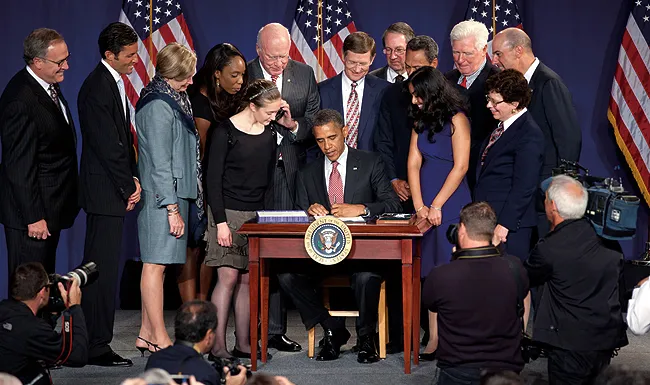Secret Sales Are Prior Art Under The America Invents Act
Secret Sales Are Prior Art Under The America Invents Act
You sell something but keep the details of the sale a secret. Is this still a sale that bars issuance of a patent under 35 USC 102: “A person shall be entitled to a patent unless the claimed invention was patented, described in a printed publication, or in public use, on sale, or otherwise available to the public before the effective filing date of the claimed invention?” The Federal Circuit Helsinn Healthcare SA v Teva Pharmaceuticals, Inc. case answers yes: Secret sales bar issuance of a patent.
Before the American Invents Act (AIA) passed in 2011, the law regarding secret sales was well-settled:
- In re Caveney rejected the argument that a sale or offer for sale did not trigger the on-sale bar when it had been “kept secret from the trade,” concluding that “sales or offers by one person of a claimed invention . . . bar another party from obtaining a patent if the sale or offer to sell is made over a year before the latter’s filing date.”
- Woodland Trust v. Flowertree Nursery, Inc. stated that “an inventor’s own prior commercial use, albeit kept secret, may constitute a public use or sale under § 102(b), barring him from obtaining a patent.”
- J.A. LaPorte, Inc. v. Norfolk Dredging Co. stated that the on-sale bar “is not limited to sales by the inventor or one under his control, but may result from activities of a third party” and rejecting the argument that “secret commercialization by a third party” is not invalidating since “the invention . . . was discoverable from the device which was sold” and the “device . . . embodie[d] the invention.”
These cases relied on pre-AIA 35 USC 102, which read: “A person shall be entitled to a patent unless (a) the invention was known or used by others in this country, or patented or described in a printed publication in this or a foreign country, before the invention thereof by the applicant for patent….” The difference between pre- and post AIA 35 USC 102, for secret sales, turns on one clause emphasized as follows: “A person shall be entitled to a patent unless the claimed invention was patented, described in a printed publication, or in public use, on sale, or otherwise available to the public before the effective filing date of the claimed invention.”

President Obama signs the America Invents Act into law.
Following passage of the AIA, some commentators and organizations (a few gathered in this excellent Patently-O article), argued that “non-public offers for sale (and non-public uses) would not qualify as prior art under the AIA,” quoting the American Bar Association IP Law Section.
The ABA’s and others’ interpretation may have been bolstered by remarks made by Senator Kyl (R-Utah): “And the current on-sale bar imposes penalties not demanded by any legitimate public interest. There is no reason to fear ‘‘commercialization’’ that merely consists of a secret sale or offer for sale but that does not operate to disclose the invention to the public.” Congressional Record at S1371.
The Federal Circuit Helsinn panel considered this and found that Senator Kyl’s remarks addressed the “public use” exception and not the “on-sale” bar. Helsinn instead chose to follow older Supreme Court precedent in Penneck v. Dialogue, which held that a public sale that did not publicly disclose an invention “would materially retard the progress of science and the useful arts, and give a premium to those who should be least prompt to communicate their discoveries.” The Supreme Court justified its decision by relying on the public service that a patent serves:
If an inventor should be permitted to hold back from the knowledge of the public the secrets of his invention; if he should for a long period of years retain the monopoly, and make, and sell his invention publicly, and thus gather the whole profits of it, relying upon his superior skill and knowledge of the structure; and then, and then only, when the danger of competition should force him to secure the exclusive right, he should be allowed to take out a patent, and thus exclude the public from any farther use than what should be derived under it during his fourteen years; it would materially retard the progress of science and the useful arts, and give a premium to those who should be least prompt to communicate their discoveries.
The Federal Circuit agreed, stating, “A primary rationale of the on-sale bar is that publicly offering a product for sale that embodies the claimed invention places it in the public domain, regardless of when or whether actual delivery occurs…Thus, our prior cases have applied the on-sale bar even when there is no delivery, when delivery is set after the critical date, or, even when, upon delivery, members of the public could not ascertain the claimed invention. There is no indication in the floor statements that these members intended to overrule these cases.”
Helsinn is likely on its way to appeal to the Supreme Court because of the potential conflict between its holding and the statute, but for now, secret sales still trigger the on-sale bar.
